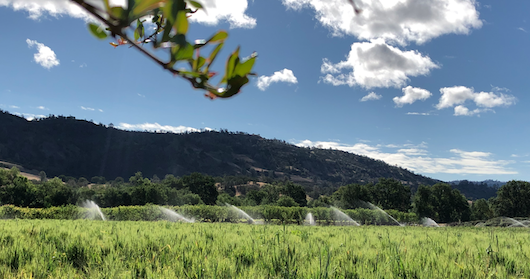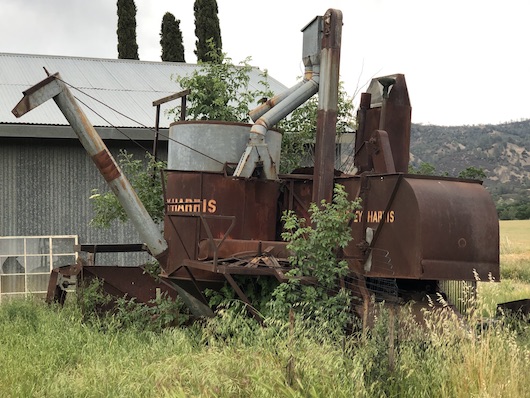
Everyone around here has been hoping, waiting and watching for the promised rain of this last weekend of April, and we were rewarded with a beautiful Spring day with gusty winds and a few squalls. Droughts are part of California’s climate and we are now in a second year of drought. Our County, Yolo, has been declared by the folks that define these things, to be in an “extreme drought” which means that there is little pasture for cattle and livestock, reservoirs are extremely low and the fire season could be a long one.
The drought isn’t just in the Capay Valley. Most of California has been abnormally dry for several years. This water season was the third driest in California’s 101 years of rain recording. Only 1924 and 1977 were drier. And there isn’t much snow in the Sierra’s where we are at 30% of average, so we can’t rely on snowmelt into reservoirs as a way to keep the rivers running. Ecosystems around the state are very vulnerable in drought years, with fish, wetlands birds and forests all predictably suffering declines.
Our farm usually relies on Cache Creek for irrigation water during the summer months. Releases into the Creek have just started, but they won’t last beyond mid-June. In drought years, when there is little rain to irrigate crops, and when streams and reservoirs are low, those farmers that have wells, rely on pumping groundwater. Full Belly Farm is no exception. Deeper wells will potentially stay productive while shallower wells may run dry. Across the state there will also be some fallowing of agricultural land and again, Full Belly may also use this strategy, choosing not to grow quite as many crops on quite as many acres.
It’s hard to predict how future years will treat the Capay Valley in terms of water. Groundwater levels, on average in the County, have shown a pattern of ups and downs, depending on rain to send the level up and then going down again with pumping and droughts. The level fluctuates from a healthy high of about 20-feet below ground (and that was over 20 years ago) down to 75-feet below ground in the worst of droughts (and the last time it got THAT bad was in 1977). We are lucky in that the aquifer is sustained by recharge when we do get rain, so that groundwater levels do recover well after droughts. But we can’t be complacent that this healthy pattern will continue as there are more and more new wells going in, putting additional pressure on the groundwater resource.
One result of all this is that our irrigation manager, Arturo, who has worked with us for almost 25 years has been pretty busy. In a good rainy season, he gets a bit of a break during the winter. But not this year. The irrigation has been going non-stop and as he dashes from his car first thing in the morning, before the work day has even officially started, he waves distractedly at me and says, “mucho trabajo” — I’ve got a lot of work to do.
Sometimes we think of organic farming as the practice of agricultural arts — the arts of husbandry, horticulture, soil science, engineering and others. Perhaps the art of organic farming gives us less ability to schedule activities, less predictable sequences of procedures and more opportunity for creativity and exercise of intuition than in an industrial setting. Farming follows cycles rather than straight lines, and each cycle seems to bring its own challenges, like the challenge to farm with less water.
Farming here is also an art in that it is beautiful. The setting is beautiful, but so are the farm fields themselves. Spring brings beautiful colors, lovely birdsong and a rising sap of energy and rebirth. In hopes that your spring is also bringing you joy, here’s to blessings on your meals!
— Judith Redmond

An abandoned combine outside our sheep barn, inherited from farms past.
